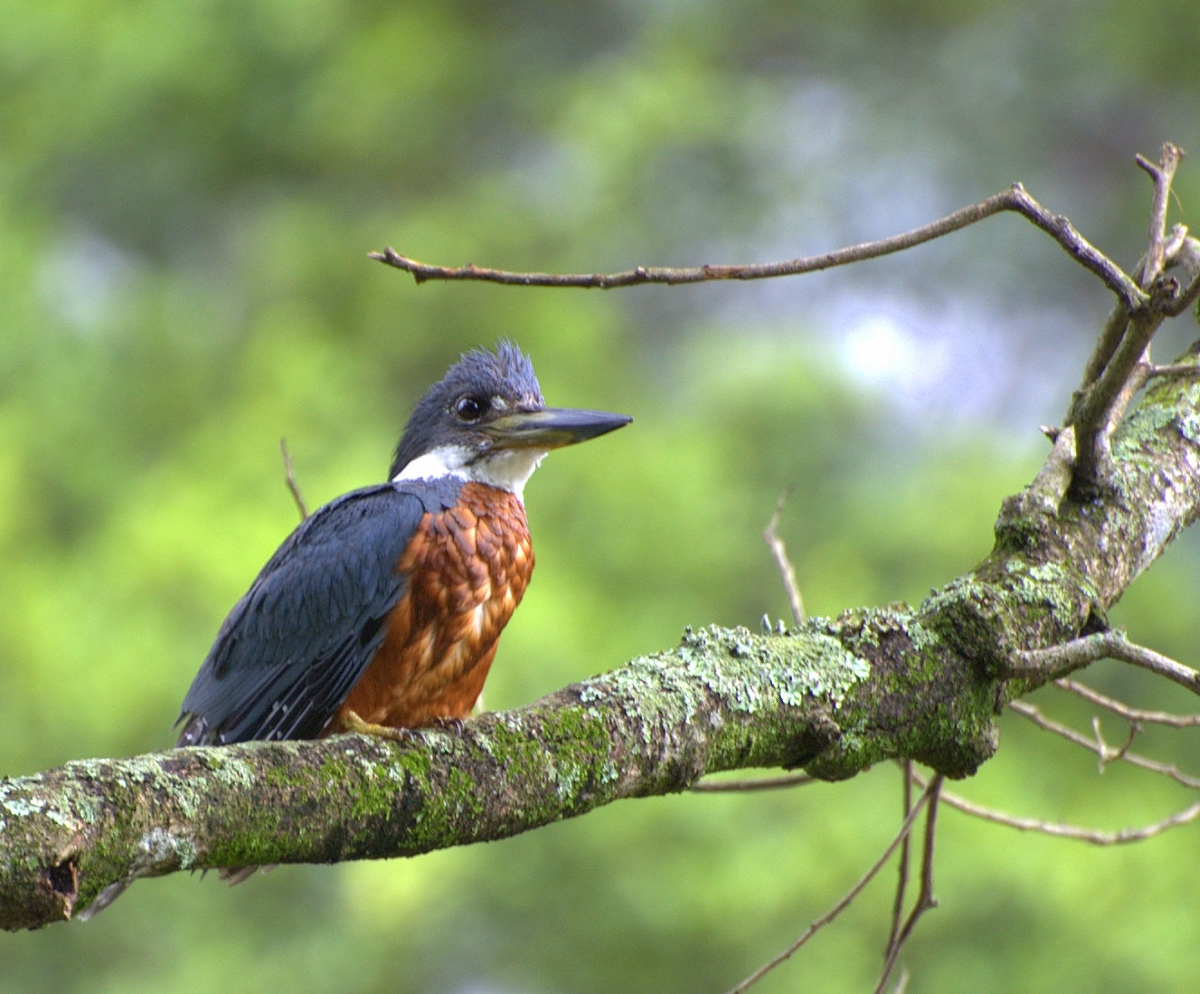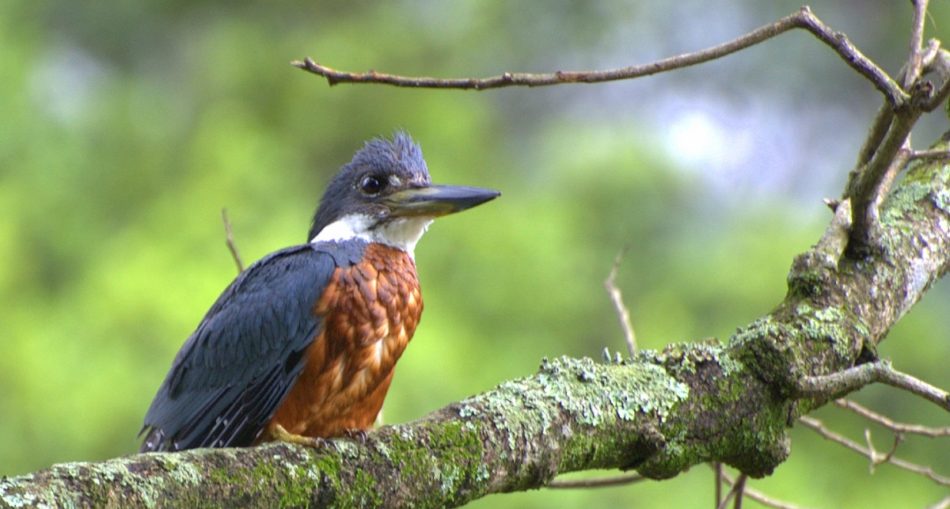The Ringed Kingfisher is a relatively large, rowdy Neotropical bird who inhabits tropical and temperate places,. You will find them near water where they can hunt the fish among the small amounts of vegetation. The Kingfisher is native to the United States, parts of Central America and South America in countries like Guyana and Brazil. However, their distribution range has been increasing. The scientific name of the Kingfisher is Megaceryle torquata. There are three (3) subspecies of the Ringed Kingfisher, the plumage of which is minutely different from Megaceryle torquata. These subspecies are the M. t. stictipennis , M. t. stellate, and M. t. torquata.

Ringed Kingfisher – Photo: By Dario Sanches from SÃO PAULO, BRASIL – MARTIM-PESCADOR-GRANDE (Ceryle torquatus), CC BY-SA 2.0, https://commons.wikimedia.org/w/index.php?curid=3760855
Description Of The Ringed Kingfisher
The plumage of Ringed kingfishers differs according to their gender and species. The plumages of the various sub-species are also slightly different. The underparts of the male Kingfisher is a rust-brown colour with a white throat and white under its tail. The females Ringed Kingfisher has a bluish-grey on its upper breast, in addition to a white band. The crest of the top of their heads is typically grey, staring from their bill’s base to their neck. Their bills range from two to three (2-3) inches depending on their gender but there is no significant difference in the size of the bird. Kingfishers have rounded wings, and a square tail. Each has ten (10) primaries, fifteen (15) secondaries, three (3) tertials and twelve (12) rectrices. Ringed Kingfisher of all ages shares one characteristic- a dark brown iris. The Neotropical bird has a straight bill, longer than its head with a curved culmen and tomial serrations. The feet of the Ringed Kingfisher are yellowish or olive-green in colour and are syndactyl, meaning they have two or more digits wholly or partly connected. Their claws are black.
- Male Kingfisher – The male Ringed Kingfisher wing ranges from one hundred and eighty-five to two hundred and eleven (185-211.1) mm.
- Female Kingfisher – The wings of the female is about one hundred eighty-five to two hundred and ten (185.0-210.1) mm.
Scientific Classification Of The Kingfisher
- Kingdom: Animalia
- Phylum: Chordata
- Class: Aves
- Order: Coraciiformes
- Family: Alcedinidae
- Subfamily: Cerylinae
- Genus: Megaceryle
- Species: M. torquata
Habitat Of The Ringed Kingfisher
The Ringed Kingfisher typically inhabits areas with clear water and little vegetation. These include tropical, temperate shorelines, streams, rivers, ponds, lakes, estuaries and freshwater habitats.
Diet Of The Ringed Kingfisher
As its name suggests, the diet of the Ringed Kingfisher primarily consists of fish, however, it will sometimes eat crustaceans like crabs, some reptiles, and rarely, tiny mammals and berries.
Reproduction Of The Ringed Kingfisher
The breeding season of the Ringed Kingfisher last for more than half the year and typically occurs in aquatic areas where there is access to fish and other food sources. However, they make their nests far from the water. The male Ringed Kingfisher offers fish to the female in a mating ritual before breeding. He will also make calls flying in circles and occasionally dipping into the water.
Their clutch usually has three to six (3-6 ) eggs. Both parents play an equal and active role in the incubation of their eggs which lasts around twenty-two (22) days. The Ringed Kingfishes makes short forage breaks in the evening or late afternoon and one in the morning.
5 Secrets of The Ringed Kingfisher
- The Ringed Kingfishers have strong wings and are able to fly over land for long bouts when compared to other kingfisher species.
- They typically travel high in the air, following rivers or streams.
- The Ringed Kingfisher bides its time waiting for its catch-it can spend hours on a perch in wait.
- The birds will regurgitate undigested food to attract flies.
- The Ringed Kingfishers breed and make their nests near water.
About The Ringed Kingfisher
Native to Guyana the Ringed Kingfisher can be spotted near the seawalls and other waterways. The bird likes to perch on branches and wait for the perfect moment to catch its prey-sometimes it waits for hours! If you ever hear a “tchack…tchack” look overhead and you may catch the Ringed Kingfisher in flight.
Article Reference
- https://www.stabroeknews.com/2019/05/26/sunday/birdwatchers/ringed-kingfisher-2/
- https://www.kaieteurnewsonline.com/2020/02/02/the-ringed-kingfisher-megaceryle-torquata/
- https://www.tandfonline.com/doi/pdf/10.1080/00063657709476527
- https://www.audubon.org/field-guide/bird/ringed-kingfisher
- https://en.wikipedia.org/wiki/List_of_birds_of_Guyana
- https://en.wikipedia.org/wiki/Ringed_kingfisher







